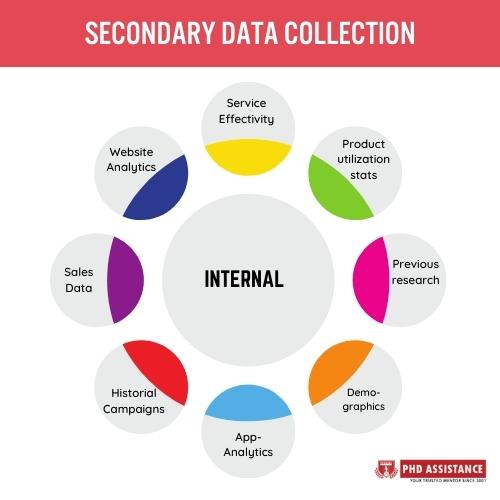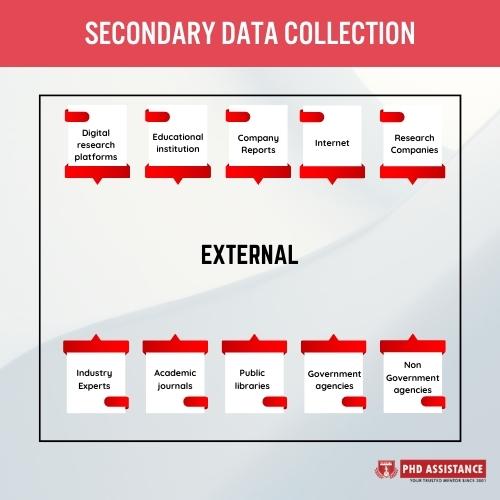A Comprehensive Guide to Desk-Based Research: Unlocking Secondary Data Sources
Secondary data sources available to researchers include academic journals, government papers, industry publications, and online databases. These sources offer enormous knowledge, allowing for insights into previous patterns, longitudinal research, and comparisons of different datasets. However, care must be taken to ensure data reliability and relevance since mistakes or biases may influence conclusions. Skilled researchers proficient at leveraging diverse sources may maximize the potential of desk-based research and offer well-informed, evidence-based findings.

Introduction
What is Desk-based research?
Desk research is a type of study based on material published in reports and similar materials available in public libraries, websites, data acquired from previously conducted surveys, and so on. Some businesses also keep data that can be utilized for the study. It is a research approach that uses already secondary data collection methods. These are gathered and summarized to improve the investigation’s overall efficacy.
Desk-based research, also known as secondary research, involves utilizing existing sources of information to gather data for your PhD thesis. This type of research can be a valuable complement to primary research, as it allows you to explore existing knowledge, gain insights, and support or refute existing theories.
Desk-based research examples:
Desk research is a popular alternative for businesses and organizations since it is a low-cost approach. Not everyone can afford to pay significant amounts of money to research design and gather data. That is why it is also known as “documentary research.”
Here’s a comprehensive guide to conducting desk-based research and unlocking secondary data sources for your PhD thesis:
- Refine your research questions: Clearly define your research questions or objectives. This will help you focus your desk-based research efforts and identify the specific types of data you need to collect.
- Identify relevant sources: Determine the types of sources that are most suitable for your research. These can include academic journals, books, conference proceedings, government reports, industry publications, statistical databases, websites, and other scholarly resources. Consider both online and offline sources.
- Develop search strategies: Plan your search strategies to locate relevant information effectively. Start by creating a list of keywords and synonyms related to your research topic. Use these keywords to search databases, library catalogues, and search engines. Consider using Boolean operators (AND, OR, NOT) to effectively refine your searches and combine keywords.
- Utilize academic databases: Academic databases such as JSTOR, PubMed, Scopus, Web of Science, and Google Scholar are excellent resources for finding scholarly articles and papers. These databases allow you to search across various disciplines and access a wide range of academic publications.
- Explore institutional libraries: Visit your university or other institutions to access books, thesis, dissertations, and other relevant materials. Librarians can guide you on using the library catalog effectively and help you navigate available resources.
- Access government and organizational reports: Government agencies, research institutes, and organizations often publish reports, white papers, and studies that can provide valuable data and insights. To access these reports, visit relevant websites and explore their research or publications sections.
- Review literature reviews and meta-analyses: Literature reviews and meta-analyses can be valuable sources of synthesized knowledge. They summarize existing research on a specific topic and often include extensive reference lists that can lead you to additional relevant sources.

- Evaluate source credibility: Assess the credibility and reliability of the sources you find. Consider factors such as the author’s expertise, the publication’s reputation, the presence of peer review, and the recency of the information. Use academic judgment to determine the trustworthiness of the sources.
- Extract and organize data: Extract relevant data from the sources you collect. This can include quantitative data, qualitative findings, theories, arguments, or conceptual frameworks. Create a system to organize and store your extracted secondary data collection, such as a spreadsheet or a reference management tool like Zotero or Mendeley.
- Check out our Sample data collection for the Project to see how the secondary data collection is constructed.
- Analyze and synthesize the data: Analyze the secondary data in the research methodology you have gathered and synthesize the information to support your research questions. Identify patterns, themes, and gaps in the existing literature. Compare and contrast different viewpoints and theories, and critically evaluate the strength of the evidence.
- Integrate secondary data with primary research: If you are conducting primary research alongside your desk-based research, integrate the types of secondary data collection into your analysis. Use the secondary data to provide context, compare findings, or support your arguments.
- Cite and reference your sources: Properly cite and reference all the sources you have used in your desk-based research methodology dissertation. Follow the appropriate citation style (e.g., APA, MLA, Chicago) as per your institution’s guidelines. Maintain accurate records of your references to avoid plagiarism and facilitate the writing of your thesis.
Desk-based research provides a foundation of knowledge and can significantly enhance the quality and depth of your PhD thesis. However, it is important to balance secondary research with primary research to contribute original insights and perspectives to your field of study.
- Check out our study guide to learn more about Secondary data collection. How to collect data for your PhD Thesis?
Conclusion
Qualitative desk-based research leverages existing data sources to access diverse information without primary data collection. Researchers gain insights into historical trends, longitudinal studies, and cross-comparisons by analyzing academic journals, government reports, industry publications, and online databases. However, caution must be exercised to ensure data credibility and relevance. Skilled researchers can make well-founded, evidence-based conclusions in any field.
About PhD Assistance
Ph.D. Assistance is completely aware that data collecting is the most critical phase in doing research and can significantly impact the results or conclusion. Our global staff of PhD experts assists you in data collecting based on the study topic and data source. Because PhD experts from across the world educate our data-collecting staff, their implicit and explicit expertise has enabled them to gather any survey (personal interview, mail, in-house), focus groups, etc. and translate it into a more accessible format, therefore assisting decision-making.
References
- Guerin, Benoit, Barbara Janta, and Anke van Gorp. “Desk-based research and literature review.” Evaluating interventions that prevent or counter violent extremism63 (2018).
- Bassot, Barbara. Doing qualitative desk-based research: a practical guide to writing an excellent dissertation. Policy Press, 2022.



